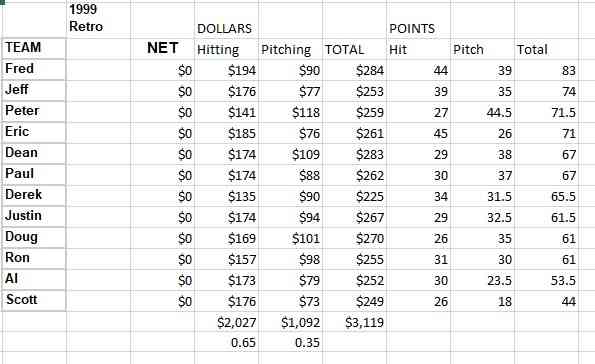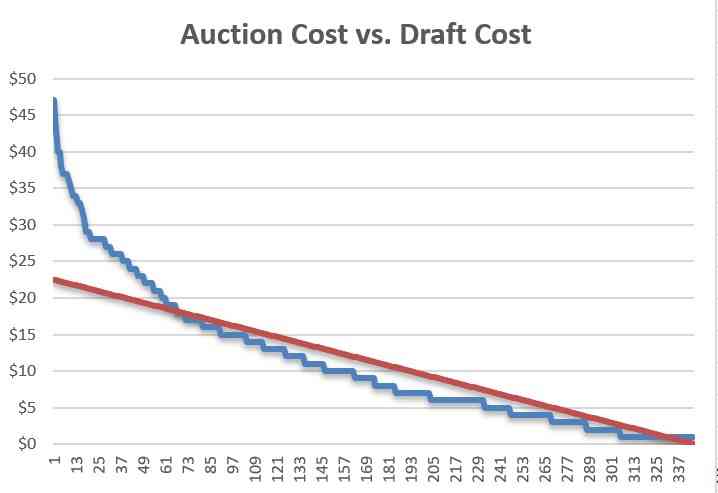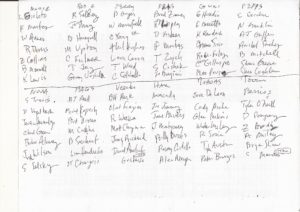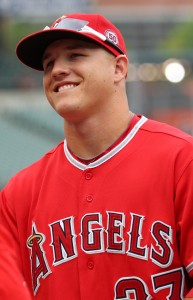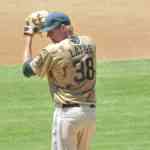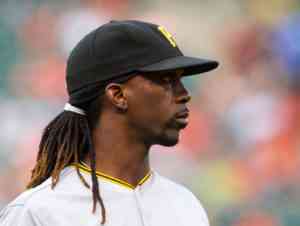 I’m asked sometimes why there isn’t a Top 250 player list in the Fantasy Baseball Guide. I wrote about this last year, explaining why, so I won’t repeat myself too much here.
I’m asked sometimes why there isn’t a Top 250 player list in the Fantasy Baseball Guide. I wrote about this last year, explaining why, so I won’t repeat myself too much here.
But an interesting thing happened this year while putting together this year’s Mock Draft for the magazine, and I thought it might be helpful to talk about it.
Now that the Guide is back to an early printing schedule, the Mock happens in mid November, and no draft service has updated draft-ranking lists loaded on their sites. We used CouchManagers.com this year, and they were glad we were using the service so early, hoping it would help them develop and fine tune their rankings.
Rankings are an important part of a draft service, because they help drafters find the players most likely to be drafted when their turn comes, which makes the whole process move more smoothly. But rankings, like ADP, also serve as a powerful suggestion for who to take in any given round. Not only do they suggest who ranks most highly, but they’re like an advertisement shown to everyone else pitching that player. If you want a player who appears near the top of the list, you better take him now because he isn’t going to fall once he’s atop the ranking list.
The fact is, playing the ebbs and flows of demand that ripple through the draft software and its lists are one of the skills of drafting a fantasy team. And another reason why a Top 250 not based on your draft sites list is of limited utility.
But this year, for the mock, I decided to take my Dollar Values and turn them into a draft list.
To each price I added .4 for catchers, .3 for shortstops, .2 for second basemen and .1 for third basemen.
I didn’t change the prices of pitchers, but I knew I would have to manage when to take them by using my sense of the draft. I wanted an Ace and I wanted a solid closer, and after that I was willing to scramble. My strategy was to take a pitcher in the later rounds when there was no standout hitter available.
(Note: I think one could simulate approximate pitcher draft slots by subtracting a certain number of places from each of them, but I think we’re better served knowing where pitchers rank in value–remember, at these prices they’re only getting 30 percent of the draft budget–and make decisions based on that.)
The list I made for that night is a bit out of date, so I’ve made a new one based on my current prices. Enjoy.
THE ROTOMAN 250
1: M Trout, LAA, OF
2: A McCutchen, PIT, OF
3: C Kershaw, LAD, P
4: J Abreu, CHA, 1B
5: M Cabrera, DET, 1B
6: P Goldschmidt, ARI, 1B
7: J Altuve, HOU, 2B
8: G Stanton, MIA, OF
9: F Hernandez, SEA, P
10: R Cano, SEA, 2B
11: C Sale, CHA, P
12: A Jones, BAL, OF
13: R Braun, MIL, OF
14: D Price, DET, P
15: C Gomez, MIL, OF
16: M Brantley, CLE, OF
17: M Bumgarner, SF, P
18: A Rendon, WAS, 2B
19: S Strasburg, WAS, P
20: I Desmond, WAS, SS
21: B Posey, SF, C
22: J Bautista, TOR, OF
23: J Ellsbury, NYA, OF
24: B Harper, WAS, OF
25: H Pence, SF, OF
26: A Gonzalez, LAD, 1B
27: F Freeman, ATL, 1B
28: A Beltre, TEX, 3B
29: P Fielder, TEX, 1B
30: C Gonzalez, COL, OF
31: S Marte, PIT, OF
32: A Rizzo, CHN, 1B
33: J Upton, SD, OF
34: J Zimmermann, WAS, P
35: C Kluber, CLE, P
36: J Reyes, TOR, SS
37: T Tulowitzki, COL, SS
38: M Scherzer, WAS, P
39: J Donaldson, TOR, 3B
40: E Encarnacion, TOR, 1B
41: V Martinez, DET, 1B
42: A Pujols, LAA, 1B
43: Y Puig, LAD, OF
44: A Wainwright, STL, P
45: Z Greinke, LAD, P
46: K Seager, SEA, 3B
47: D Wright, NYN, 3B
48: B Hamilton, CIN, OF
49: M Kemp, SD, OF
50: J Cueto, CIN, P
51: I Kinsler, DET, 2B
52: A Chapman, CIN, P
53: D Gordon, MIA, 2B
54: D Murphy, NYN, 2B
55: E Longoria, TAM, 3B
56: C Hamels, PHI, P
57: M Holliday, STL, OF
58: J Votto, CIN, 1B
59: C Yelich, MIA, OF
60: H Iwakuma, SEA, P
61: J Lucroy, MIL, C
62: C Kimbrel, ATL, P
63: D Pedroia, BOS, 2B
64: B Revere, PHI, OF
65: H Ramirez, BOS, SS
66: S Castro, CHN, SS
67: A Gordon, KC, OF
68: T Frazier, CIN, 3B
69: R Zimmerman, WAS, 3B
70: Y Cespedes, DET, OF
71: N Cruz, SEA, OF
72: C Dickerson, COL, OF
73: M Ozuna, MIA, OF
74: J Werth, WAS, OF
75: H Kendrick, LAD, 2B
76: W Rosario, COL, C
77: G Richards, LAA, P
78: A Ramirez, CHA, SS
79: E Andrus, TEX, SS
80: M Machado, BAL, 3B
81: B Belt, SF, 1B
82: G Holland, KC, P
83: Y Darvish, TEX, P
84: J Samardzija, CHA, P
85: P Sandoval, BOS, 3B
86: N Arenado, COL, 3B
87: C Davis, BAL, 1B
88: B Gardner, NYA, OF
89: A Rios, KC, OF
90: M Adams, STL, 1B
91: J Heyward, STL, OF
92: W Myers, SD, OF
93: D Span, WAS, OF
94: M Cabrera, CHA, OF
95: L Martin, TEX, OF
96: J Kipnis, CLE, 2B
97: E Aybar, LAA, SS
98: M Carpenter, STL, 3B
99: B Butler, OAK, 1B
100: S Choo, TEX, OF
101: E Hosmer, KC, 1B
102: J Bruce, CIN, OF
103: J Morneau, COL, 1B
104: J Teheran, ATL, P
105: M Tanaka, NYA, P
106: D Santana, MIN, SS
107: N Walker, PIT, 2B
108: N Castellanos, DET, 3B
109: K Calhoun, LAA, OF
110: A Eaton, CHA, OF
111: A LaRoche, CHA, 1B
112: J Martinez, DET, OF
113: B Zobrist, OAK, 2B
114: C Blackmon, COL, OF
115: C Crawford, LAD, OF
116: S Gray, OAK, P
117: A Jackson, SEA, OF
118: D Mesoraco, CIN, C
119: Y Molina, STL, C
120: H Street, LAA, P
121: A Escobar, KC, SS
122: M Prado, MIA, 2B
123: C Utley, PHI, 2B
124: S Perez, KC, C
125: L Chisenhall, CLE, 3B
126: J Harrison, PIT, 3B
127: M Pineda, NYA, P
128: R Castillo, BOS, OF
129: B Dozier, MIN, 2B
130: J Loney, TAM, 1B
131: G Springer, HOU, OF
132: L Duda, NYN, 1B
133: D Betances, NYA, P
134: A Cobb, TAM, P
135: J Arrieta, CHN, P
136: F Rodney, SEA, P
137: K Jansen, LAD, P
138: A Wood, ATL, P
139: J Peralta, STL, SS
140: C Santana, CLE, 1B
141: Y Gomes, CLE, C
142: S Gennett, MIL, 2B
143: K Wong, STL, 2B
144: L Cain, KC, OF
145: A Craig, BOS, OF
146: D Ortiz, BOS, DH
147: M Trumbo, ARI, 1B
148: J deGrom, NYN, P
149: R Odor, TEX, 2B
150: B Moss, CLE, OF
151: J Hardy, BAL, SS
152: C Headley, NYA, 3B
153: S Cishek, MIA, P
154: D Fowler, HOU, OF
155: M Wieters, BAL, C
156: P Alvarez, PIT, 3B
157: C Johnson, ATL, 3B
158: C Carter, HOU, DH
159: A Garcia, CHA, OF
160: K Davis, MIL, OF
161: M Morse, MIA, OF
162: G Polanco, PIT, OF
163: D Stubbs, COL, OF
164: J Fernandez, MIA, P
165: D Fister, WAS, P
166: J Lester, CHN, P
167: C Carrasco, CLE, P
168: J Shields, FA, P
169: M Shoemaker, LAA, P
170: D Smyly, TAM, P
171: J Papelbon, PHI, P
172: T Roark, WAS, P
173: A Sanchez, DET, P
174: E Gattis, HOU, C
175: H Ryu, LAD, P
176: J Rollins, LAD, SS
177: J Segura, MIL, SS
178: D Jennings, TAM, OF
179: B Phillips, CIN, 2B
180: T Plouffe, MIN, 3B
181: A Ramirez, MIL, 3B
182: A Cabrera, TAM, SS
183: A Lind, MIL, 1B
184: O Arcia, MIN, OF
185: M Betts, BOS, OF
186: C Crisp, OAK, OF
187: A De Aza, BAL, OF
188: J Hamilton, LAA, OF
189: B Lawrie, OAK, 2B
190: J Mauer, MIN, 1B
191: J Jay, STL, OF
192: A Pagan, SF, OF
193: P Hughes, MIN, P
194: D Robertson, CHA, P
195: A Cashner, SD, P
196: M Fiers, MIL, P
197: M Melancon, PIT, P
198: B McCann, NYA, C
199: J Lowrie, HOU, SS
200: J Mercer, PIT, SS
201: J Gyorko, SD, 2B
202: T Yasmany, ARI, 3B
203: D Ackley, SEA, OF
204: M Bourn, CLE, OF
205: C Cron, LAA, 1B
206: R Davis, DET, OF
207: T Hunter, MIN, OF
208: J Lagares, NYN, OF
209: N Markakis, ATL, OF
210: J Soler, CHN, OF
211: D Salazar, CLE, P
212: J Weaver, LAA, P
213: M Cain, SF, P
214: G Cole, PIT, P
215: D Viciedo, CHA, OF
216: R Martin, TOR, C
217: C Allen, CLE, P
218: Z Britton, BAL, P
219: Y Ventura, KC, P
220: F Rodriguez, MIL, P
221: T Rosenthal, STL, P
222: X Bogaerts, BOS, SS
223: B Crawford, SF, SS
224: A Simmons, ATL, SS
225: D Freese, LAA, 3B
226: C Gillaspie, CHA, 3B
227: K Morales, KC, 1B
228: S Pearce, BAL, 1B
229: C Rasmus, FA, OF
230: M Cuddyer, NYN, OF
231: C Granderson, NYN, OF
232: R Howard, PHI, 1B
233: G Parra, MIL, OF
234: J Pederson, LAD, OF
235: A Pollock, ARI, OF
236: M Wacha, STL, P
237: Y Solarte, SD, 2B
238: D LeMahieu, COL, 2B
239: J Panik, SF, 2B
240: C Tillman, BAL, P
241: M Montero, CHN, C
242: W Ramos, WAS, C
243: E Cabrera, FA, SS
244: T Watson, PIT, P
245: N Feliz, TEX, P
246: S Kazmir, OAK, P
247: A Sanchez, TOR, P
248: M Stroman, TOR, P
249: J Verlander, DET, P
250: S Casilla, SF, P
I hope this is a good start for you in your draft.

